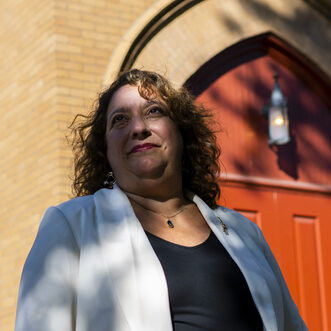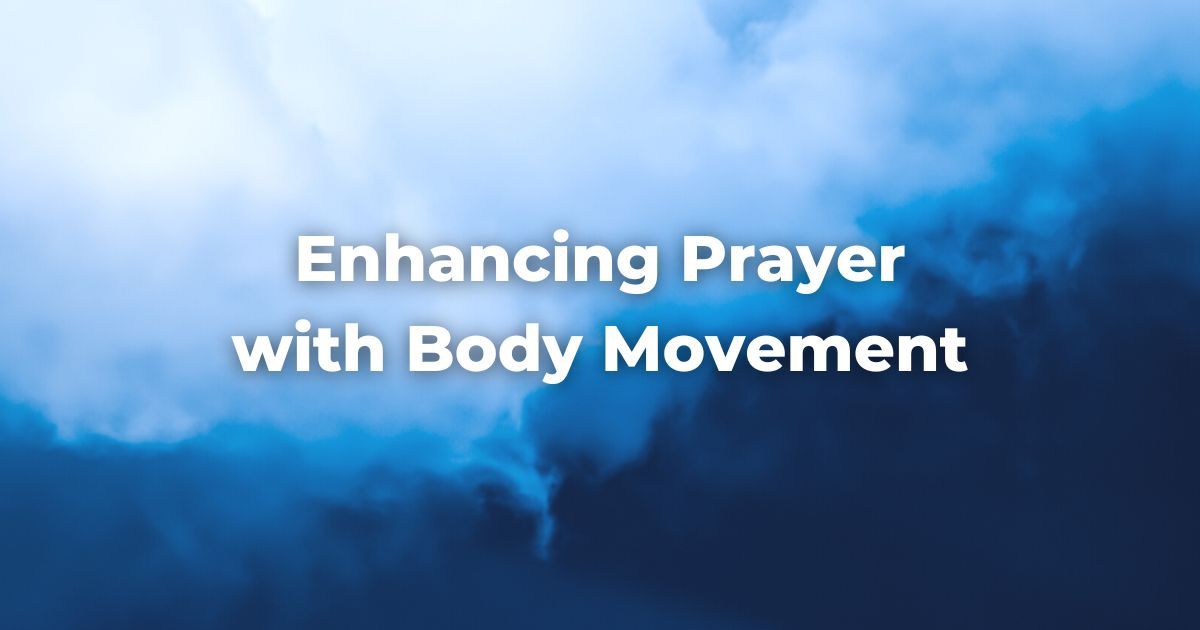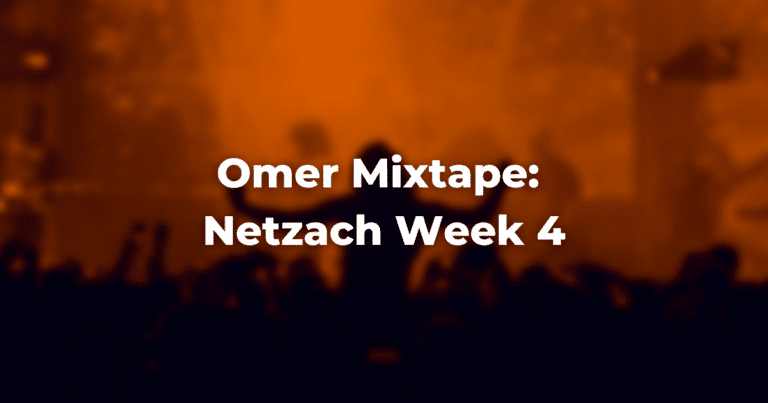One aspect of prayer that tends to mystify the uninitiated has to do with the physical nature of public prayer in the synagogue.
Table of Contents
Swaying, standing, sitting, pointing, turning to the right or left (or turning around entirely), walking down stairs backwards, stepping forward and stepping backwards—all of these are parts of the way prayer is orchestrated in traditional Jewish settings.
However, since these instructions rarely appear written out in prayerbooks, these gestures generally end up as the province solely of the priorly initiated.
Swaying During Prayer
The most characteristic way to move during prayer is to sway gently back and forth.
Generally referred to by English-speaking Jews as shuckling (from Yiddish), this movement is a physical way of putting ourselves “in the moment.”
Putting the whole body to work in prayer helps us attain a greater level of focused intention during our t’fillah. By involving our entire bodies and not just our mouths in prayer, we respond to the psalmist’s ancient injunction that all one’s bones together should praise God (Psalms 35:10).
The swaying also has another purpose: it puts us in touch with the ebb and flow of the liturgy itself.
The rhythm and the motion might feel strange at first, but one of the secrets of learning how to pray involves finding one’s personal pace at prayer. The gentle swaying of the body allows us to find that rhythm as we measure the ease of our involvement by noting the degree to which our bodies are tense or relaxed during prayer.
Standing
Another hallmark of the prayer service is the practice of standing during certain prayers.
During our weekday prayers we stand for:
-
- The morning blessings
-
- The opening prayer in the P’sukei D’zimra section
-
- From just before introductory passages leading into the Song of the Sea through the Bar’khu (also spelled Barchu) call to prayer
-
- From Tzur Yisrael that leads directly into the Amidah and through the end of the silent recitation of that prayer
-
- For the K’dushah (also spelled Kedusha) insertion in the repetition of the Amidah
-
- When the Ark is opened to take the TorahRefers to the first five books of the Hebrew Bible, the Tanakh, also called the Five Books of Moses, Pentateuch or the Hebrew equivalent, Humash. This is also called the Written Torah. The term may also refer to teachings that expound on Jewish tradition. Read more out and then again to return it
-
- At the end of the service for Aleinu
-
- When Hallel is recited, we also rise for that litany of praise.
Bowing
It is also customary to bow from the waist at certain moments during the service.
We bow at the beginning and end of the first and penultimate benedictions of the Amidah and during Aleinu.
The rule of thumb is that, whenever we have bowed down out of reverence for God, we always stand erect upon the subsequent recitation of God’s name.
Movement During the Amidah
Prayer is movement as well as language in Judaism and certain specific gestures and movements are ordained for the individual at prayer.
As noted, there are four places during the recitation of the Amidah when worshipers must bow from the waist: at the beginning and end of the opening blessing (Avot) and at the beginning and end of the penultimate blessing (Hoda’ah).
One should bend the knee at the word barukh, bow down while saying attah, and return to the upright position before uttering the name of God (Shulchan Arukh, Orach Chayim 113:7). However, at the word modim one simply bows at the waist without bending the knee.
The image suggested by this choreography is that of a sovereign being approached by a respectful subject.
Although the concept of God as an absolute monarch will inevitably strike moderns as archaic, the model is more antique than obsolete.
Although there are indeed contexts in which tradition urges us to think of ourselves as partners of the Almighty, we are bidden to approach God in prayer precisely as would the subjects of an all-powerful monarch.
That is the imagery invoked by the obligation to bow during the Amidah.
As another nod to the concept of God as divine Sovereign, worshipers prepare to recite the Amidah by taking three steps backwards, then three steps forward, while reciting the six Hebrew words of Psalms 51:17 (“God, open my lips that I may proclaim the praises due You”).
The imagery here is rooted in an amalgam of related notions.
We step back in worried awe as we contemplate the prospect of standing in prayer before the divine throne. However, God is not only Sovereign, but Friend as well. Encouraged by the gently attentive nature of God’s listening presence, we step forward again and only then begin to pray.
Throughout the Amidah, one should stand with one’s feet together and one’s eyes cast downward (Mishneh Torah, Prayer and the Priestly Blessing 5:4).
The Amidah concludes with a closing prayer based off the words composed in ancient times by Mar, son of Ravina (BT Berakhot 17a). When reciting the last words of this prayer,
עוֹשֶׂה שָׁלוֹם בִּמְרוֹמָיו הוּא יַעֲשֶׂה שָׁלוֹם עָלֵינוּ וְעַל כָּל יִשְׂרָאֵל וְאִמְרוּ: אָמֵן
Oseh shalom bi-m’romav hu ya·aseh shalom aleinu ve’al kol yisra·el ve’imru amein.
Worshipers take three steps backwards, then bow to the left, to the right, and forward, and then return to their original position by taking three steps forward.
This allows worshipers to conclude their prayers in the same manner in which they entered into them, and the parallel rhythm adds a dimension of order to the prayers.
Jewish worship is not solely language, but rather a kind of mixed theatric of spoken language, symbolic body language, and concentrated thought.
Some other orchestrated moves during the Amidah are as follows:
-
- During the K’dushah, when the prayer leader intones the words zeh el zeh to make reference to the angels turning “this way and that” as they recite the heavenly liturgy on high, it is customary to bow to the left, then to the right in imitation of the heavenly minions at prayer.
-
- During the K’dushah, when Isaiah 6:3 is cited, it is customary to rise up on the balls of one’s feet three times, once on each recitation of the word kadosh. With this theatrical gesture, we indicate our wish to attain the sanctity of the angels at prayer as we recite our earthly liturgy.
-
- During the repetition of the Amidah, when the prayer leader reaches the penultimate benediction, Hoda’ah, worshipers all bow slightly while still seated, and only then proceed to recite the text of the “Rabbis’ Modim” prayer quietly as the prayer leader concludes.
-
- When the prayer leader reaches the three-part priestly benediction, the leader bows to the left at the first line, to the right at the second line, and toward the front at the third.
Kaddish: To stand or not to stand
There are different customs regarding the propriety or necessity of standing during the recitation of Kaddish.
Many follow the rule that worshipers should stand when Kaddish marks the completion of a specific section of prayers, but that they otherwise should remain seated.
Others rise for every Kaddish. Some stay in whatever position they were already in (so either stay standing or stay seated depending on when kaddish comes).
There are also congregations where no one rises for any Kaddish at all, other than mourners for the Mourner’s Kaddish.
In any event, worshipers should follow the custom of the congregation in which they are worshiping.
Facing Jerusalem
It is required that we face toward Jerusalem, and specifically toward the site of the ancient Temple there, when we say our prayers.
According to Maimonides (Mishneh Torah, Prayer and the Priestly Blessing 5:3) Jews outside of Israel face toward the Holy Land when they pray, Jews in Israel face toward Jerusalem, and Jews actually in Jerusalem face toward the Temple Mount.
In a situation in which it is not possible to determine which direction is which, it is sufficient to imagine ourselves turning toward the Holy City and mentally and emotionally to come into the domain of God’s holy presence on earth.
The veneration of Israel as the Holy Land is a central tenet of the Jewish religious experience. Facing toward Israel in prayer is thus a way of physically demonstrating our commitment to the Land of Israel.
Adapted with permission from The Observant Life
Authors
-

Rabbi Dr. Karen G Reiss Medwed, is Teaching Professor emerita at Northeastern University. She serves as Interim Vice Provost, Academic Affairs and Initiatives for HUC-JIR. Dr. Reiss Medwed's scholarship includes digital education, higher education leadership, and faith-based education. Dr. Reiss Medwed was ordained by JTS in 1995, and earned her Ph.D. from New York University's Steinhardt School of Education in Curriculum, Teaching and Learning with a specialization in Jewish education in 2005.
View all posts -

The Observant Life: The Wisdom of Conservative Judaism for Contemporary Jews distills a century of thoughtful inquiry into the most profound of all Jewish questions: how to suffuse life with timeless values, how to remain loyal to the covenant that binds the Jewish people and the God of Israel, and how to embrace the law while retaining an abiding sense of fidelity to one’s own moral path in life.
Written in a multiplicity of voices inspired by a common vision, the authors of The Observant Life explain what it means in the ultimate sense to live a Jewish life, and to live it honestly, morally, and purposefully. The work is a comprehensive guide to life in the 21st Century. Chapters on Jewish rituals including prayer, holiday, life cycle events and Jewish ethics such as citizenship, slander, taxes, wills, the courts, the work place and so much more.
View all posts




